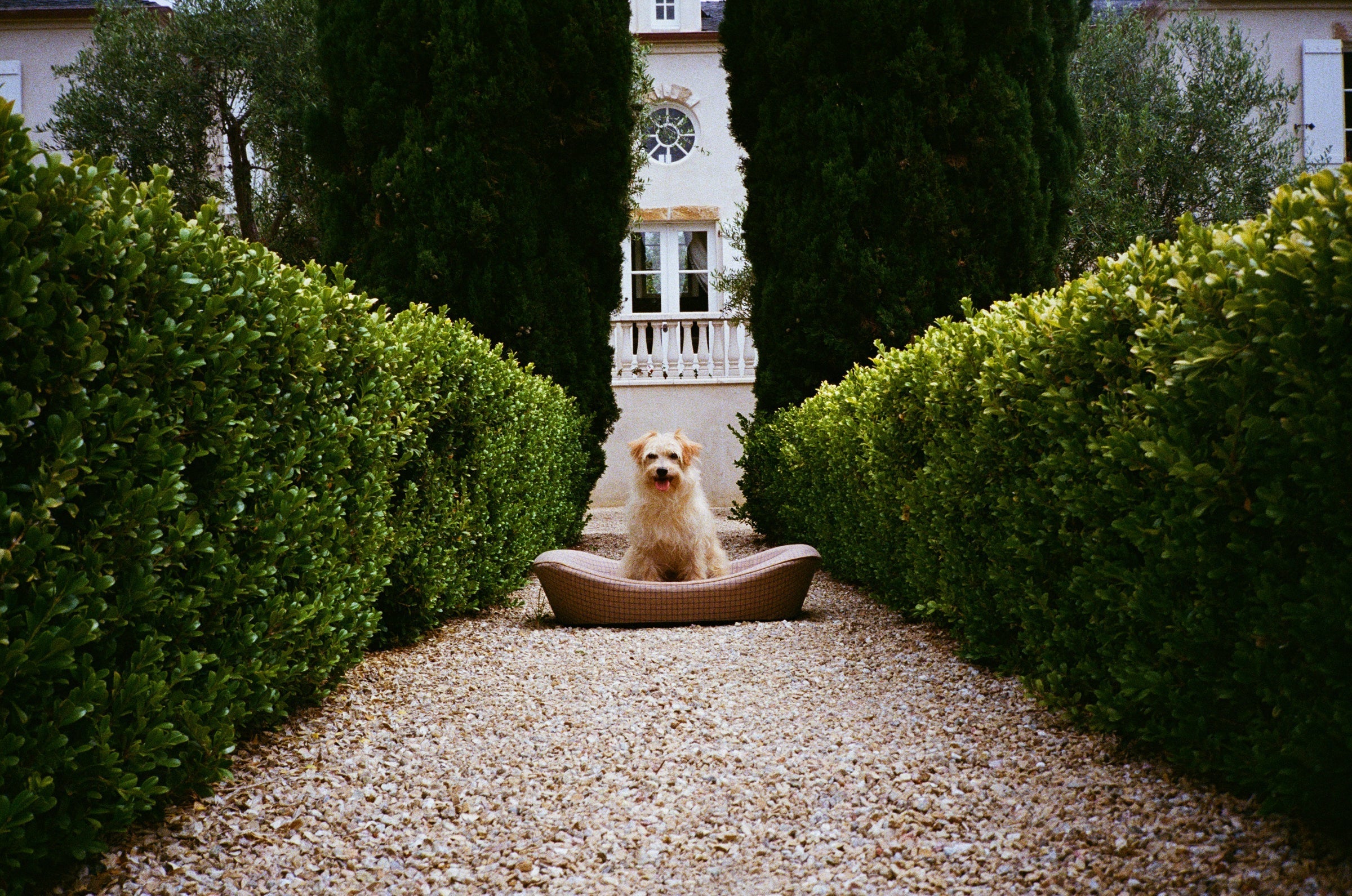Article: How Many Hours of Sleep Do Dogs Really Need?

How Many Hours of Sleep Do Dogs Really Need?
Anyone who’s shared their home with a puppy knows the scene all too well: boundless energy you can’t seem to tame as they zoom around the living room, as if in a caffeine-fuelled frenzy from one too many cups of tea. Your first instinct, as mine once was, might be to tire them out with a long walk or an intense game of fetch. But here’s the thing: what your puppy truly needs isn’t more stimulation – it’s more sleep. Sleep, the unsung hero of canine health and behaviour.
Much like us, dogs’ sleep patterns and needs evolve as they age. Yet, how much sleep is too much? And how much isn’t enough? The answer, as with most things in life, depends. Let’s break it down – from the whirlwind energy of puppies to the dignified snoozes of senior dogs – and uncover the vital role sleep plays in their well-being.
Why Sleep Is Crucial for Dogs
Sleep isn’t just a nice bonus in your dog’s day; it’s an essential biological process. During sleep, dogs repair tissues, process memories, and replenish their energy reserves. For puppies, sleep supports growth and development – think of it as nature’s way of downloading software updates into their rapidly expanding brains.
For middle-aged and senior dogs, sleep is a chance to recover from daily wear and tear and to maintain immune system function. Depriving a dog of proper rest can lead to behavioural issues (hello, chewed slippers), physical health problems, and even an increased risk of chronic conditions like obesity or anxiety.
Puppy Sleep: Chaos Meets Calm
If you’ve ever met a puppy, you’ll know they are an intoxicating blend of manic energy and sudden narcolepsy. One moment, they’re enthusiastically chasing their tail, and the next, they’re sprawled out on the floor mid-spin. Puppies need a staggering 18–20 hours of sleep per day.
This might seem excessive, but it’s not all beauty rest. During sleep, puppies’ bodies grow, their brains consolidate the day’s learnings, and their immune systems strengthen. A lack of sleep, on the other hand, can lead to overtiredness – a state that often manifests as hyperactivity or poor behaviour. So, that cushion-shredding frenzy? It might just be a puppy’s way of saying, “I’m exhausted!”
How to Encourage Healthy Puppy Sleep:
- Establish a routine: Dogs thrive on predictability, so create consistent nap and bedtime schedules.
- Create a quiet environment: Avoid overwhelming your puppy with constant noise or activity.
- Don’t overdo it: While exercise is important, overexertion can lead to difficulty winding down.
Middle-Aged Dogs: The Steady Sleepers
By the time dogs reach adulthood, their sleep needs stabilise. Most adult dogs require around 12–14 hours of sleep per day, including overnight rest and a few daytime naps. Working breeds, such as Border Collies, may naturally require less rest due to their high energy levels, while smaller or more relaxed breeds might nap a bit more.
Adult dogs often align their sleeping habits with their owners’ schedules, making them adaptable companions. However, life changes – like moving house, introducing a new pet, or even seasonal weather shifts – can temporarily disrupt their routines.
Signs of Healthy Sleep in Adult Dogs:
- They wake up alert and eager to play or go for a walk.
- Their naps are restful, without signs of restlessness or discomfort.
- They follow a predictable routine that mirrors your household rhythms.
Senior Dogs: Restful Golden Years
As dogs enter their senior years, they start to sleep more – often logging between 14 and 18 hours a day. This increased rest isn’t laziness; it’s a necessary adaptation as their bodies slow down. Older dogs need more downtime to recover from physical activity, and sleep becomes a key ally in managing conditions like arthritis or cognitive decline.
However, disrupted sleep patterns can be common in senior dogs. Night waking, pacing, or increased napping during the day could point to health issues like pain or cognitive dysfunction syndrome (the canine equivalent of dementia).
How to Support Senior Dog Sleep:
- Invest in an orthopedic dog bed to ease joint discomfort.
- Stick to a regular routine, which helps reduce anxiety.
- Consult your vet if you notice drastic changes in their sleep habits.
The Science of Canine Sleep
Ever noticed your dog twitching, barking softly, or even “running” in their sleep? That’s because dogs, like humans, experience both rapid eye movement (REM) and non-REM sleep. During REM sleep, their brains process the day’s events and dreams occur – yes, your dog probably does dream about chasing squirrels.
Interestingly, dogs sleep in shorter cycles than humans, with more frequent transitions between light and deep sleep. This is why they’re often ready to spring into action at the faintest sound, whether it’s the rustling of a treat packet or the doorbell.
Common Sleep Challenges
Despite their impressive ability to snooze, dogs are not immune to sleep problems. If your dog is struggling to get enough rest, it could be due to:
- Anxiety: Separation anxiety or loud noises (like fireworks) can disrupt sleep.
- Pain: Conditions like arthritis or dental issues may make it hard for dogs to settle.
- Environment: A noisy, uncomfortable, or poorly ventilated sleeping area can interfere with rest.
When in doubt, consult a vet. Sleep disturbances can sometimes signal underlying health problems that need attention.
Crafting the Perfect Sleep Environment
Ensuring your dog has a cozy place to rest is a simple yet effective way to support their sleep. Here’s how:
- Choose a quality bed: Orthopedic beds with memory foam provide excellent support for dogs of all ages.
- Keep it quiet: A peaceful, distraction-free corner of your home is ideal for doggy naps.
- Control the temperature: Ensure their sleeping area is neither too hot nor too cold.
- Maintain cleanliness: Regularly wash bedding to reduce allergens and maintain freshness.
Embracing the Snooze
Dogs are creatures of paradox: endlessly energetic yet gloriously lazy. From the wild bursts of puppyhood to the serene naps of senior years, understanding their sleep needs is key to their health and happiness.
So, next time your furry friend curls up for yet another nap, remember: they’re not being lazy; they’re recharging, growing, and healing. And if you’re still convinced that sleep is for the weak, try keeping up with a puppy all day – you’ll soon discover the bliss of a well-earned snooze.
After all, whether it’s puppy sleep, adult snoozes, or senior slumbers, a well-rested dog is a happy dog. And what could be more rewarding than that?
Discover the art of doggy rest with Enid Blythe. Our luxury orthopedic beds are designed to support your dog’s sleep needs at every stage of life – because they deserve nothing less.
This article is a researched opinion piece intended for informational purposes only. While every effort has been made to ensure the accuracy of the information provided, I am not a veterinary professional. For personalised advice or concerns regarding your pet’s health and well-being, please consult a qualified veterinarian.


Leave a comment
This site is protected by hCaptcha and the hCaptcha Privacy Policy and Terms of Service apply.